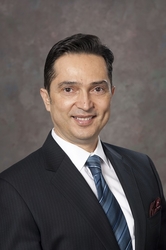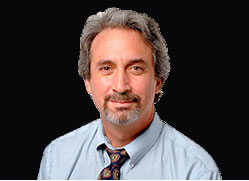 A national survey published in 2014 revealed a disturbing finding. Compared to college graduates pursuing other professions, medical students, residents and early career physicians experienced a higher degree of burnout.
A national survey published in 2014 revealed a disturbing finding. Compared to college graduates pursuing other professions, medical students, residents and early career physicians experienced a higher degree of burnout.
Citing that article, a group of researchers at University of California at Davis School of Medicine wondered whether medical students’ childhood adversity and resilience played a role in their burnout, said Dr. Andres Sciolla, an associate professor of psychiatry and behavioral sciences at the University of California at Davis Medical School. Sciolla is the lead author of a recent study in the journal Academic Psychiatry that investigated those questions.
Their query was based on the landmark CDC-Kaiser Permanente Adverse Childhood Experiences Studythat showed a remarkable link between 10 types of childhood trauma — such as witnessing a mother being hit, living with a family member who is addicted to alcohol or who is mentally ill, living with a parent who is emotionally abusive, experiencing divorce — and the adult onset of chronic disease, mental illness, being violent or a victim of violence, among many other consequences. The study found that two-thirds of the more than 17,000 participants had an ACE score of at least one, and 12 percent had an ACE score of four or more. (For more information, see ACEs Science 101.)
The ACE Study and subsequent research shows that people with an ACE score of 4 are twice as likely to be smokers and seven times more likely to be alcoholic than someone with an ACE score of 0. Having an ACE score of 4 increases the risk of emphysema or chronic bronchitis by nearly 400 percent, and attempted suicide by 1200 percent. An ACE score of 6 or higher is associated with a 20-year shorter lifespan than someone with an ACE score of 0. However, subsequent research has shown that social buffers, such as having just one caring adult in a child’s life, can mitigate the impact of ACEs.
For the UC Davis study, 86 third-year medical students completed an ACE survey. Of those, 49% had an ACE score of 0, 40 % had ACE scores between 1-3, and 12 % had ACE scores of 4 or more.
“Contrary to our expectations, the prevalence of ACEs in a class of third-year medical students was comparable to rates in the general population,” wrote the authors.

“You can assume that because physicians, in general, and medical students, come from more affluent backgrounds than the general population that those medical students would have a lower prevalence of ACEs than the general population and that was not the case,” explained Sciolla.
Also significant, said Sciolla, is that all of the students who had ACE scores of 4 or more were women. “When we’re talking about interpersonal violence — physical abuse, sexual abuse, emotional abuse — women are more likely than men to be victims,” he said. “The medical workforce is becoming increasingly female. And we know that female physicians are at a high risk for suicide and burning out, we can speculate that female physicians may be at increased risk for negative health and professional outcomes, so it needs to be looked at further.”
And the study revealed that higher ACE scores had exacted a toll. Students were asked to gauge how much their experiences of adversity in childhood had affected their physical and mental health. Of those who reported an ACE score of 4 or higher, 100 % said that their mental health had been significantly or moderately impacted by their childhood trauma, compared with 26% of students with ACE scores of 3 or less.
“Those students who have high ACE scores are at a heightened risk for health problems, based on the literature of ACEs,” said Sciolla.
Students also answered questions that indicated they had adults in their lives who provided emotional support. They were asked to respond with answers such as “definitely true,” “probably true,” “not true,” to statements including: I believe that my father loved me when I was little; When I was a child, neighbors or my friends’ parents seemed to like me; When I felt really bad, I could almost always find someone I trusted to talk to.They answered 14 statements from a resilience questionnaire developed by psychologists Mark Rains and Kate McClinn. And, overall, the students’ resilience scores were high, with the median number of affirmative responses to the 14 questions was 13, according to the study.
A recent study in the Journal of Women’s Health, entitled “Adverse Childhood Experiences and Mental and Behavioral Health Conditions During Pregnancy: The Role of Resilience, suggests just how important resilience might be to mental health. The study of 355 prenatal women found, for example, that women with no ACEs but with low resilience have more depressive symptoms than those with high ACEs and high resilience, according to Dr. Carey Watson, one of the researchers and a physician in Obstetrics & Gynecology at Kaiser Medical Center in Antioch, Calif. (Read this ACEs Connection story here.)
Another motivation for asking medical students to take the ACEs and resilience surveys was to allow them to reflect on their own experiences as they participated in role play in class with an actor playing the part of a parent whose family is in the grip of trauma, said study co-author Dr. Michael Wilkes. Wilkes developed the curriculum for teaching third-year students about ACEs science in the Doctoring class.

“They were going to be dealing with a ‘patient’ who had all kinds of childhood trauma and were suffering greatly from it. And the idea was could we ask the students to understand what ACEs were and how they affected somebody without having them going through [taking an ACE survey] themselves?” said Wilkes, a professor of medicine at UC Davis.
While students had the option of opting out of taking part, had they done so, they would have missed out on an opportunity, according to Wilkes. “We felt it was an enormous advantage to help them understand and experience what this 10-item survey meant in terms of health and prior experiences,” he said. (Full disclosure: ACEs Connection founder and publisher, Jane Stevens, is acknowledged in the article for providing input on the case study used to teach students about interacting with a family experiencing trauma.)
When students came to class, they were provided with the results of the entire class’ ACE survey — anonymously — and were taught about the ACE Study. “They were shocked and talked about what this means, how it might impact their education and what they might do with this information as well,” said Wilkes. Before the class began, small group facilitators made sure that students were reminded that mental health support was available, should they want to seek help. The rest of the class activity went something like this, said Wilkes:
The “patient” asks scripted questions about her own ACEs and her child’s ACEs, and the students brainstorm and enact responses to the questions.
“The job of the physician was to reassure her, understand her concerns, empathize with her and give her information and a referral for professional help,” said Sciolla.
The overall experience hit home for many of the students, said Wilkes.
“Many told stories about siblings who had grown up in the same house but had suffered greatly,” recalled Wilkes. “It led into a big discussion about the concept of resilience. Our medical students, without sounding arrogant, our medical students are probably at the very top of resiliency. They made it into medical school despite all these obstacles and barriers,” he said. “What is it about that? How can we understand that? Can we capitalize on that?”
However, the researchers pointed out, 12 percent of the medical students who took the ACE survey had ACE scores of 4 or more. “In the absence of data to the contrary, these findings suggest a need for concern about the vulnerability of these medical students with regard to health risk behaviors and physical and mental health problems during training and in the future, in medical practice,” noted Wilkes.
The researchers acknowledged some limitations with the study. For one, it only involved one group of medical students.
Wilkes said they’re starting a study looking prospectively at nursing students, social work students, veterinary medical students and medical students. “Following forward, [we want to know] how do ACEs scores predict problems in medical school?” he asked.
If their study findings are replicated in other medical schools with comparable results, Sciolla says it will be incumbent upon medical administrators and educators to consider finding solutions.
“Those physicians may be triggered by their own ACEs,” said Sciolla, “and they might be a barrier to providing quality care to those patients unless they’re given the resources and education to make that not a liability, but on the contrary, to make that a strength because they would have their own knowledge and their own learning of how to heal from that trauma so they could be more effective as healers of others.”
[…] of fight or flight. This state can cause a tremendous impact on their ability to learn. In another study, two-thirds of the more than 17,000 participants had an ACE score of at least one, and 12 percent […]
LikeLike
Not sure why anyone was surprised medical student’s ACEs were so high. The original Kaiser study demographics were mostly middle to upper middle class whites. I shudder at what a similar study in a poorer and/or minority area would reveal. No wonder mental illness and substance abuse is so prevalent.
LikeLike
I’m a Nurse Practitioner and studing for my Psych certification. I’ve been profoundly affected by ACEs, maternal stress, as well as other forms of chronic and toxic stress. My story would take too long (and too painful), but the the neurological and endocrine system’s cortisol production is just one aspect of creating, not only mental health problems, but the leading causes of death and premature disability.
I am grateful to know that we are slowly being pulled out of the denial, that healthcare providers are just as vulnerable as the general population. When I look at statistical data regarding physician suicide as compared to the general population, I truly wonder who should be teaching whom, when it comes to dealing with chronic and toxic stress, trauma, and building resilience. I’ve been in healthcare for 35 years; I’m often shocked at the ignorance, stigma and judgment by colleagues, towards both patients and staff. Seeking help shouldn’t be punitive; but a sign of strength and courage.
Let’s make it a goal to change business, educational systems and communities, to provide an atmosphere of assessment of stressors as well as building a culture of growing coping skills and resilience.
LikeLiked by 1 person
HI Ann, Thanks for your thoughtful comment!
LikeLike
I wonder how workplace trauma (verbal, emotional abuse, physical attacks by patients/family members and co-workers), impacts physician suicide rates? This is technically not an ACE, since it is not in childhood, but I wonder if there are correlations?
LikeLiked by 1 person
The Pennebaker expressive writing paradigm offers a basis both academic and practical for a therapy to heal psychologically from these problems. I write from the perspective of having healed from my need to self medicate. Simply remove the time limits and broaden the scope to a thorough review of ones childhood. It took me 10 months but the result is monumentally positive.
LikeLiked by 1 person
It is interesting to know this. It is not that I “like” it, but that it is good to have some way to get data and begin to tailor support for doctors accordingly!
LikeLiked by 1 person